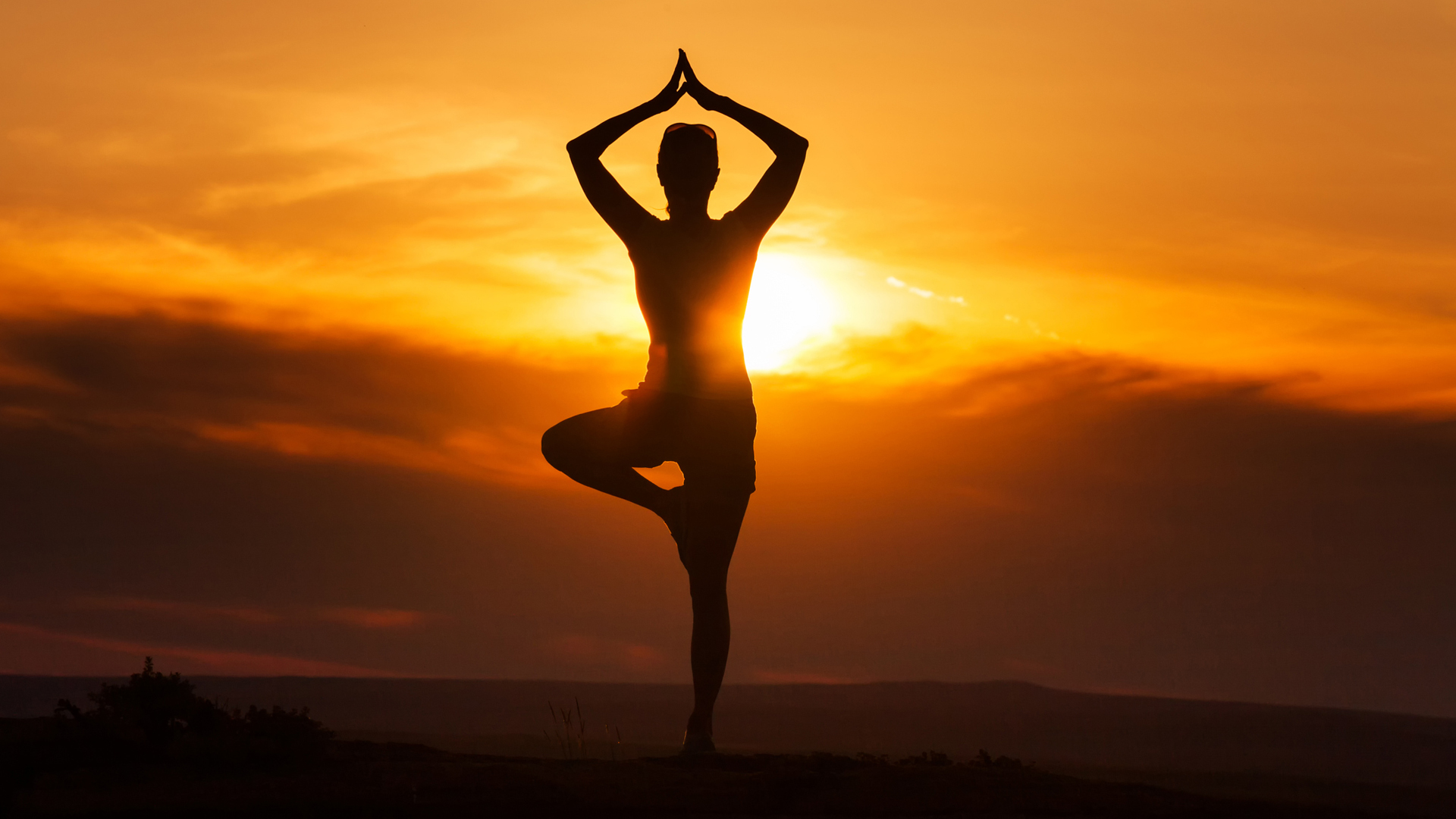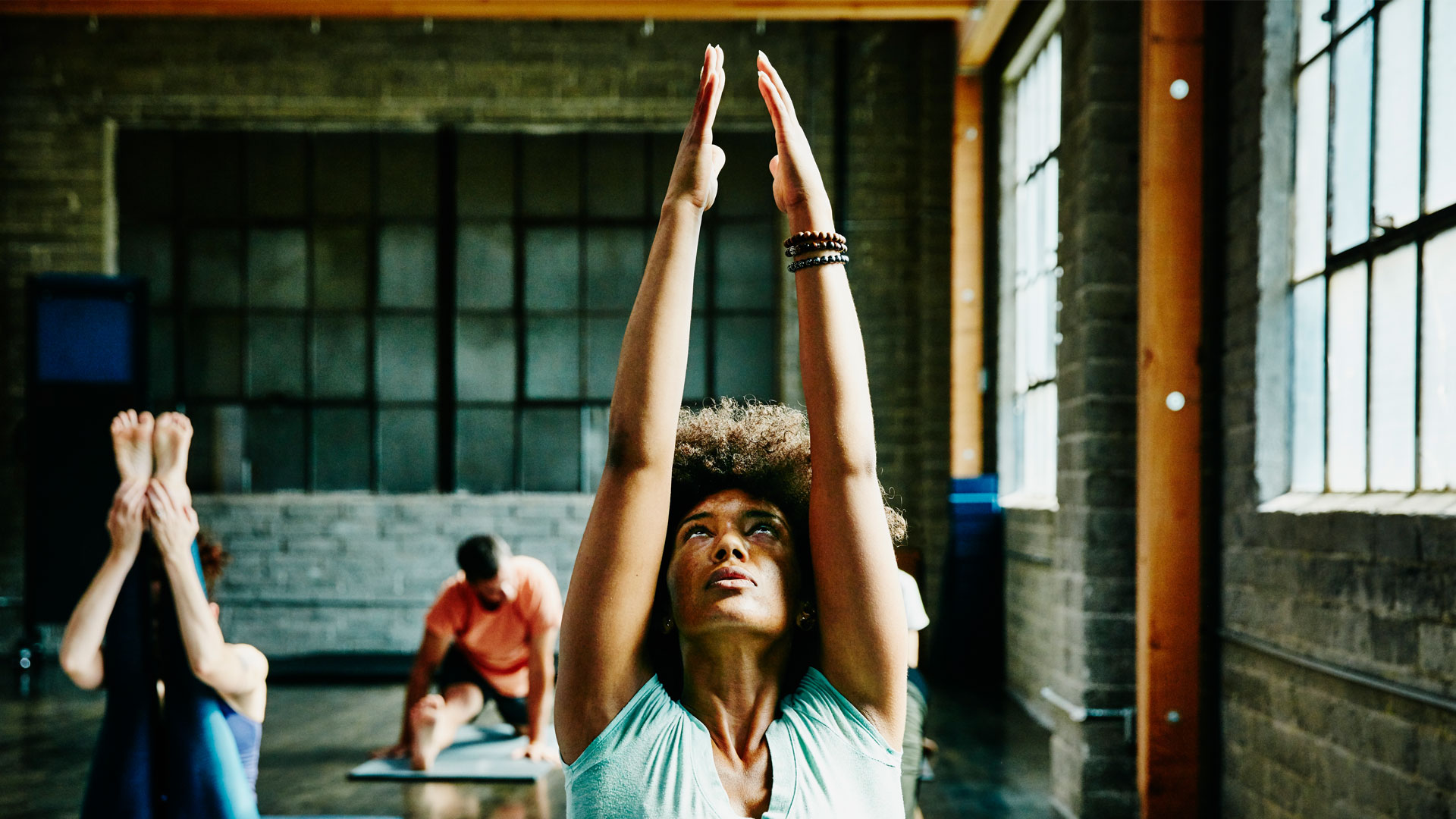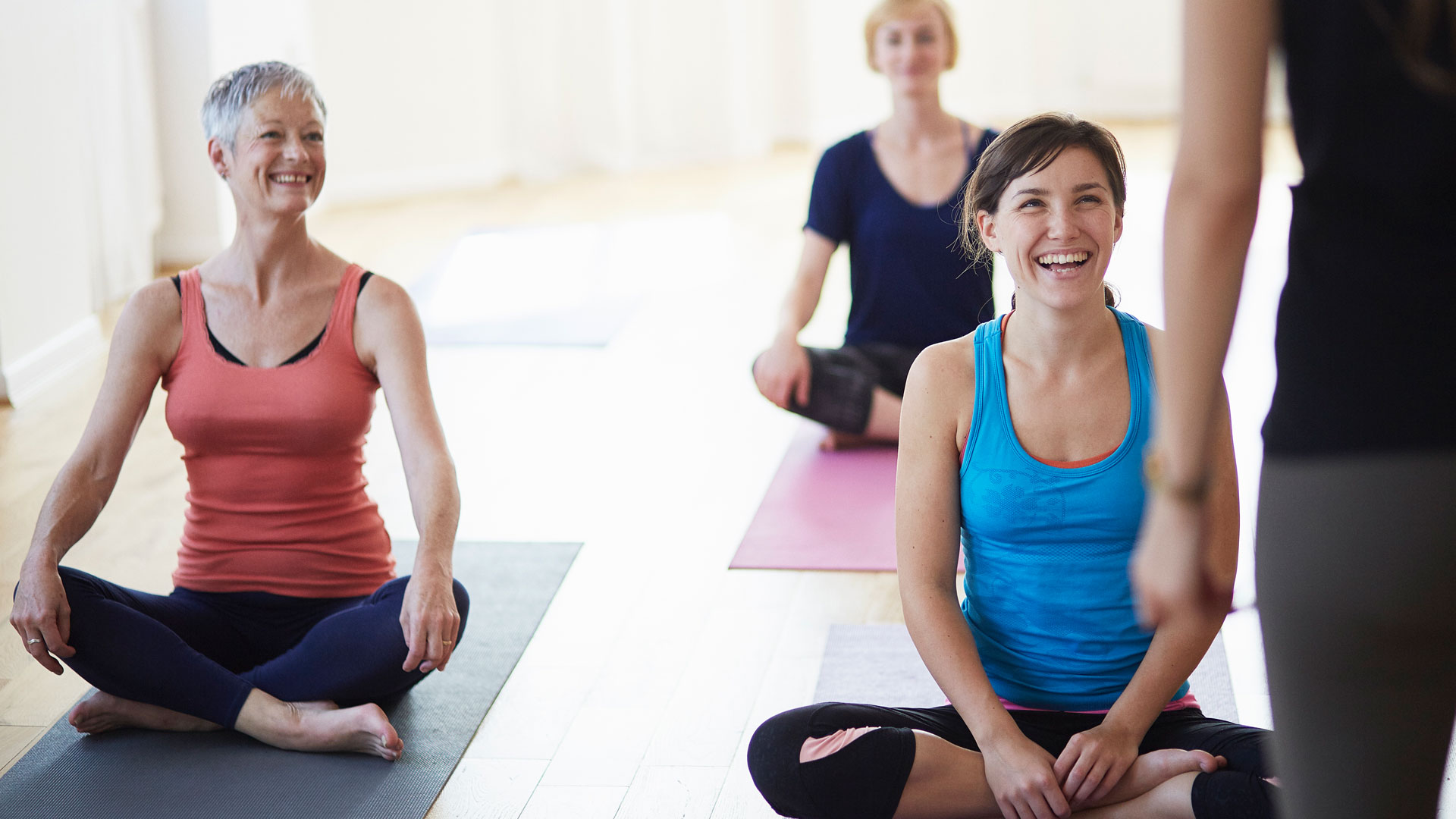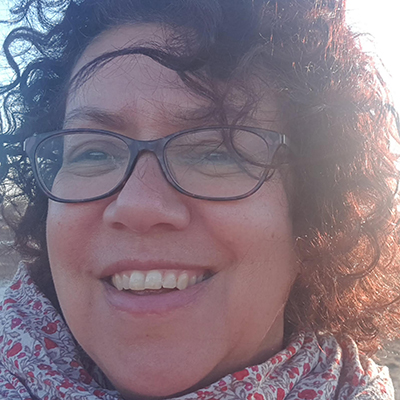Is yoga a religion?
Many people take up yoga to boost their flexibility, but is yoga a religion?

Watch a yoga class and chances are by the end of the session you’ll have seen students bow their heads, hold their hands in a prayer position and quietly whisper ‘Namaste’. So is yoga a religion? It’s a reasonable question to ask, especially as they may have also knelt on their mat with closed eyes and chanted ‘OM’ in front of a statue of a Buddha or Indian god.
While these rituals are not uncommon in yoga, most classes today focus on physical postures. However, it wasn’t always that way; early yoga practitioners had an entirely different agenda. Here we speak to world-renowned yoga expert and co-author of Roots of Yoga, James Mallinson, about the origins of the practice. Then UK author and yoga teacher Eve Boggenpoel explains how to get started with yoga so you can enjoy its many benefits.
• Read more: Best yoga mats
Is yoga a religion?
Dating back over two thousand years, yoga drew on a range of traditions including Hinduism and Buddhism, but it wasn’t until Medieval times that physical postures were introduced, explained Dr. James Mallinson, senior lecturer in Sanskrit and Classical and Indian studies at SOAS, University of London. Nevertheless, it was still very much concerned with spiritual matters at this time. "The first text to teach physical yoga practices [known as hatha yoga] was written by Buddhists in the 11th century and called the Amṛtasiddhi,” he told Live Science, "and, certainly, through these practices they were aiming for some kind of salvation or liberation.”
Modern-day yoga has echoes of these religious beliefs - natarajasana, or dance pose, for example, is a representation of Hindu god Shiva, and sun salutations may also reflect earlier beliefs. "In the Vedas [ancient Indian texts], the sun is a god, so you could argue that sun salutations are religious to some extent,” suggested Mallinson. Today, however, many practitioners simply enjoy yoga as a physical practice that increases feelings of calm and gives them the opportunity to carve out some space for themselves in an otherwise busy week.

How to start doing yoga
Ideally, try to learn yoga in the physical presence of a teacher who can tailor postures specifically to you, offer personalized advice based on what they see, and provide hands-on adjustments to enable you to experience the best alignment your body can achieve. If that’s not possible, the pandemic has meant teachers are increasingly teaching over Zoom, while online streaming sites, such Yoga International or Ekhart Yoga in Europe, offer a wide range of teachers and yoga styles. Classes can vary from 10 to 90 minutes and you can usually search by teacher, yoga style, level of proficiency, and other parameters, such as energizing, relaxing, or women’s health. Initially, try out a variety of classes to find something you resonate with, then build a base from there.

What you need to start
You don’t need to invest in expensive clothing when you’re just starting out, as long as what you wear is comfortable and allows you to move freely. If you do hot yoga, though, you might like to invest in workout clothes with wicking qualities, as these will transfer moisture from your body to the outer side of the fabric where it evaporates. Avoid baggy t-shirts, as they may ride up when you’re in poses where your head is lower than your hips.
Get the world’s most fascinating discoveries delivered straight to your inbox.
Yoga studios will provide you with the equipment you need, but if you’re planning to practice at home, you’ll need a good mat. Often referred to as a sticky mat, specialist yoga mats provide cushioning for your knees and prevent your hands and feet from slipping in poses such as downward dog. Depending on the style of yoga you practice, there are a few other props that can be really useful, especially for beginners. Yoga blocks and straps can act as extensions of your arms, helping you to get the full benefits of the pose before you reach full flexibility. Bolsters are super useful, too. They help you maintain good posture in seated positions when you have tight hips, and can be used to gently open your joints or reduce tension in other parts of the body - placed beneath your knees when lying in relaxation pose, for example, they take the pressure off your lower back.

Setting goals
Yoga is unlike other forms of exercise, in that progress isn’t necessarily measured by external gains. It’s what you feel like inside that matters. In the book, Yoga Sutras of Patanjali by Edwin Bryant (North Point Press, 2009), the author translates the father of modern yoga, Patanjali’s, famous definition of yoga as: "Yoga is the stilling of the changing states of the mind”, so while you may not be able to do a headstand or place your palms flat on the floor in a forward bend, if you are learning to connect to a place of inner calm and finding it easier to contact stillness both on and off the mat, you will definitely be making good progress.
That said, it helps to have a roadmap when starting yoga, and one approach is to first work with your breath, followed by your ‘foundation’ and then your spine. Learning to control your breath helps you be more present in your body, and will be very useful when you progress onto yogic breathing techniques that support more complex poses and sequences. Your ‘foundation’ refers to the area of your body that touches the ground and, as with a building, the stronger the foundation, the more stable your postures will be. Finally, as the central axis of your body, your spine plays a key role in yoga poses, providing stability, facilitating flexibility and absorbing shock. A healthy spinal alignment will enable you to develop good form in the postures, and maximize the benefits of your practice.

Are there different types of yoga?
There are now many styles of hatha yoga, each with a different emphasis, so when you’re starting a practice it's worth thinking about what you want to achieve. If your main aim is to improve your posture, Iyengar yoga might be a good place to start as it focuses on good alignment. Or Paulie Zink’s Yin yoga, which holds poses for up to five minutes or more to open joints and stretch fascia, is a good option for those looking to work deeply on their flexibility.
If it’s a strong workout you’re after, ashtanga yoga, developed by K. Pattabhi Jois, will take you through a series of challenging sequences, while other students or those with health issues might prefer restorative yoga, where poses are floor-based, use bolsters and blocks to support the body and are held for up to 20 minutes to deeply relax you. Of course, you can also try a varied range of yoga styles for a balanced exercise plan that works on a number of levels. For more on this, take a look at our feature on how to improve your flexibility or yoga for back pain: what you need to know.
Eve Boggenpoel is a UK-based freelance journalist writing about health, fitness and wellbeing for publications including Natural Health, Women’s Fitness, and Health & Wellbeing. A yoga teacher, counselor, and holistic health practitioner, she has written seven books on yoga and one on mindfulness. When not working, she’s happiest spending time in nature, walking, running, wild swimming or doing tai-chi on the beach.



